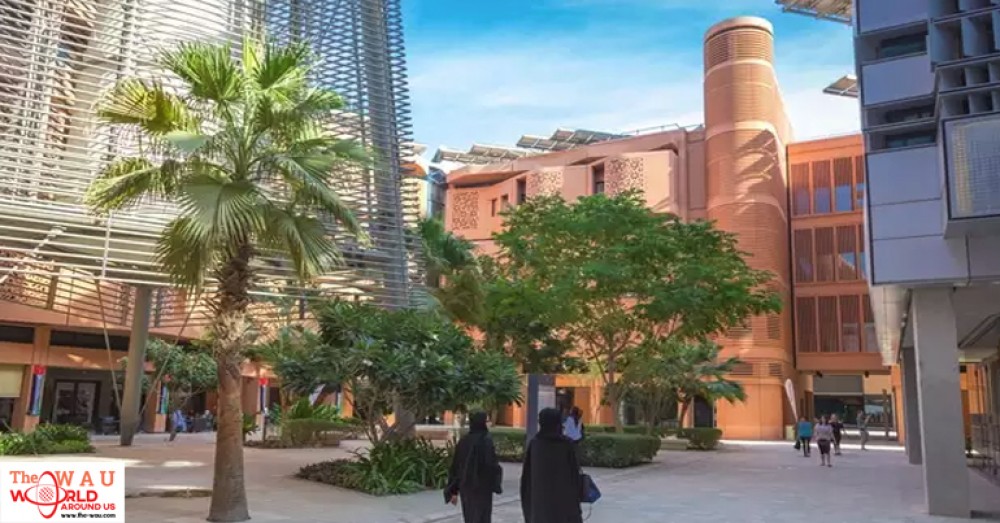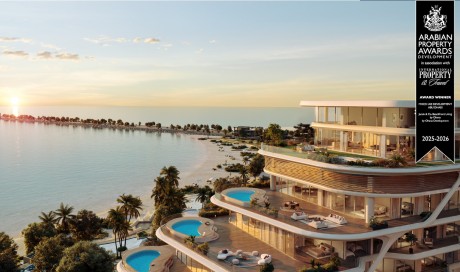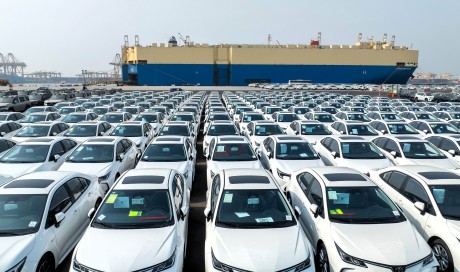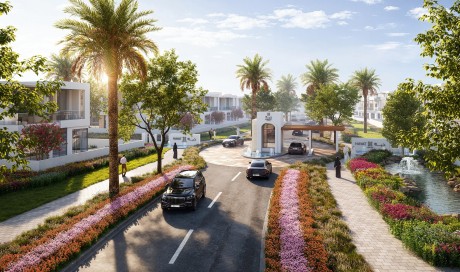Between the Abu Dhabi airport and an enclave of suburban villas is a neatly delineated, 2.3-square-mile plot of…mostly desert. It’s not quite a mirage, but it is a work-in-progress: Masdar City, the most ambitious—and expensive—urban planning experiment on the planet today.
Abu Dhabi, the largest and richest of the United Arab Emirates, first announced the project in 2008. Masdar City was to be the first-ever human settlement with no negative environmental impact—zero waste, zero carbon, car-free, fed by recycled water. But even Abu Dhabi’s famous oil reserves—which power a nearly trillion-dollar sovereign wealth fund, the Abu Dhabi Investment Authority—were not immune to the global financial crisis that rocked the world economy that same year. Even as the government-funded Masdar Initiative first broke ground on the city more than a decade ago, its dimensions had already begun to change.
Green is not the first color that comes to mind when thinking of the United Arab Emirates. Postcards advertise pale gold, the shade of its vast desert interior, and turquoise blue, the tint of its warm Gulf waters. Economic and political coverage evoke the glossy black of crude oil. But the UAE, governed by a federation of absolute monarchies, is remarkably cognizant of the limits of their fossil fuel resources as well as the steep price those resources exact on the global climate.
Sheikh Rashid bin Saeed AlMaktoum, the UAE’s first-ever vice president and the hereditary ruler of Dubai before his death in 1990, famously said, “My grandfather rode a camel, my father rode a camel, I drive a Mercedes, my son drives a Land Rover, his son will drive a Land Rover, but his son will ride a camel.”
Abu Dhabi has “a more conservative and low-key approach to its development,” explains Syed Ali in his 2010 book, Dubai: Gilded Cage, “in contrast with Dubai’s flashy,” headline-grabbing projects. But while the two emirates have diverging styles of development, both are focused on diversifying their economies: keenly aware how easily cars can be replaced with camels.
Today, green technology is a major component of the UAE’s plan to transform their singular, oil-focused economy to a heterogenous, knowledge-based one. It's why Masdar aims “to be a model for the commercial adoption of clean technologies,” as the company explained in an official statement. Stakeholders want Masdar City to become “a ‘greenprint’ for sustainable urban development.”
But more than 10 years after construction began, most of Masdar remains empty—a lot of sand.
As originally designed by London architecture firm Foster + Partners in 2007, Masdar City anticipated up to 50,000 new residents within a decade. Today, that number is closer to 1,300—most of whom are students at Khalifa University of Science and Technology (formerly the Masdar Institute) and living in on-campus housing. Masdar City’s ecological aims have also shifted.
Today it works toward being a carbon neutral, rather than a carbon free, settlement. Much of the energy used in Masdar City’s construction was produced by fossil fuels rather than by its on-site solar panels. It’s revolutionary underground Personal Rapid Transit system, or PRT, was abandoned after only two stations—out of a planned 1,500—opened. It’s ground-level streets, meant to be pedestrian only, are filled with cars.
“The PRT costs a fortune,” explained one Masdar Initiative manager to urbanism scholar Federico Cugurullo in a 2018 Economy and Space article, “and Masdar City is not an environmental crusade.”
Another defended the project's attention to the bottom-line. “Actually it is very good if you treat [Masdar City] as a business. If you can’t make money it is not sustainable.”
...[ Continue to next page ]
Share This Post















